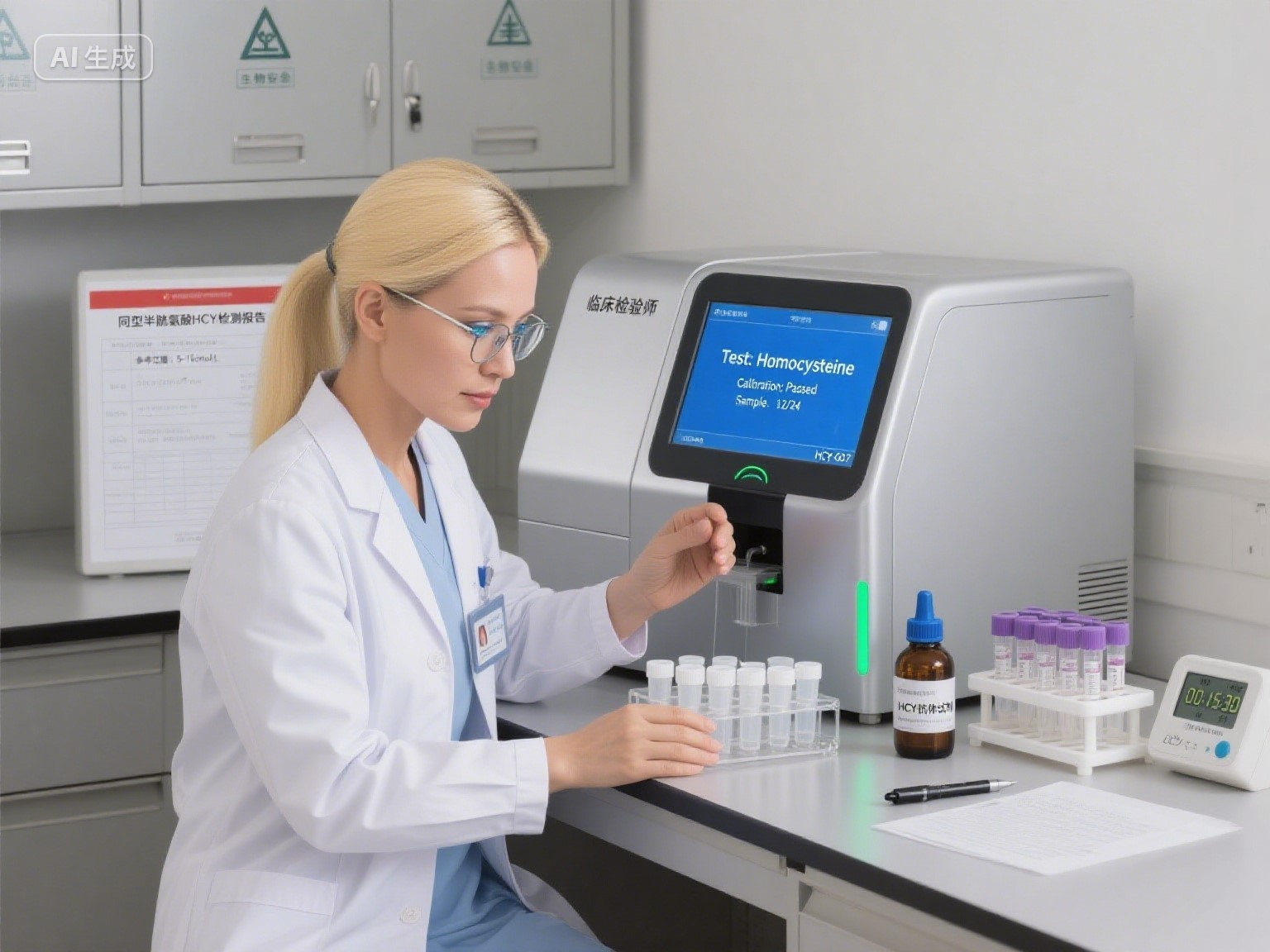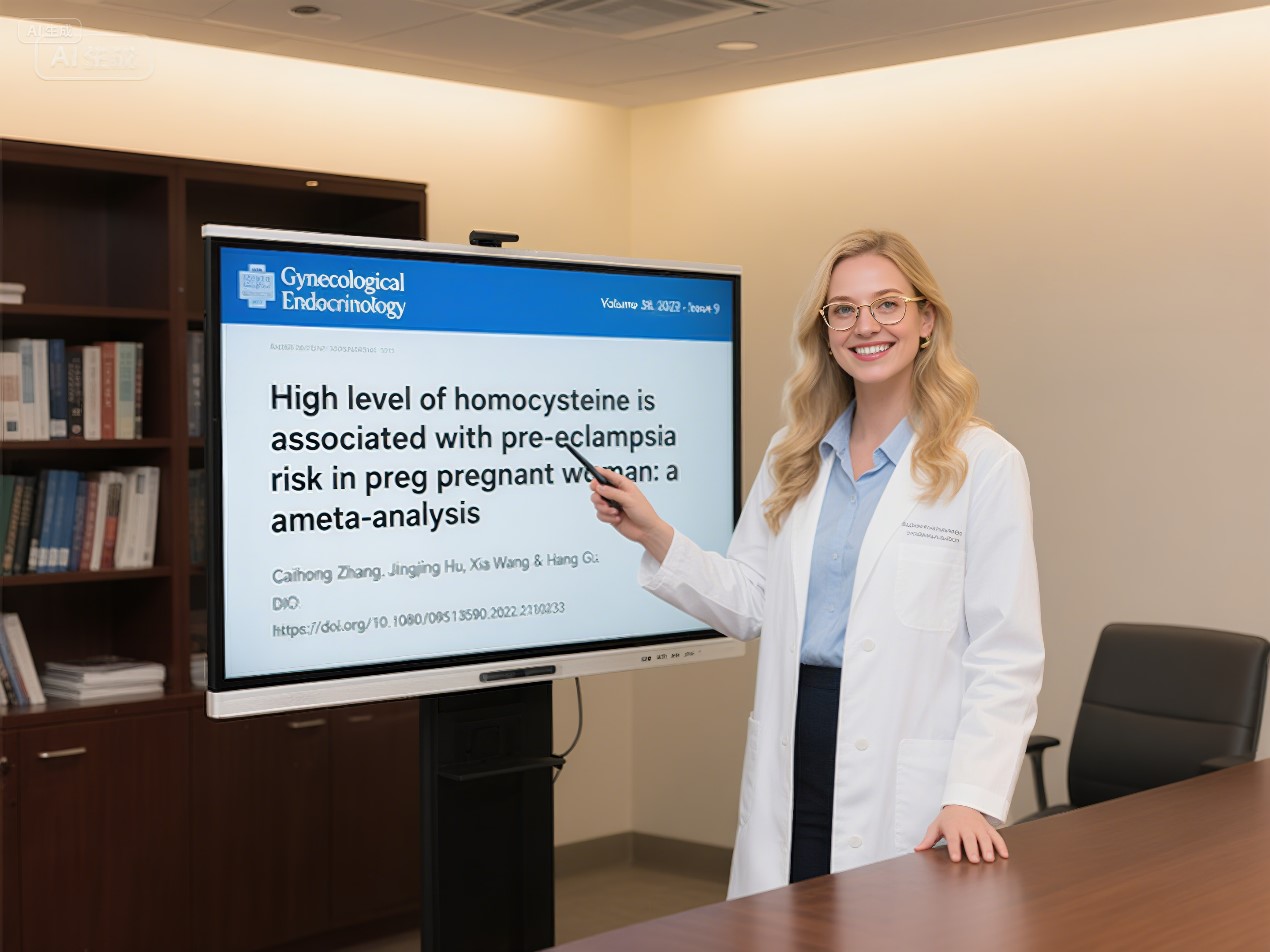At her 24th week of pregnancy, Emily held her prenatal check-up report, her fingertips slightly cold: "Doctor, my homocysteine level is at 11.6 μmol/L, which is 1.2 higher than last time. Will this affect my baby?" The doctor pointed at the fetus moving in the ultrasound and said, "This indicator is high, increasing the risk of preeclampsia. Try switching to an active folate to bring it down more safely."

Four weeks later, Emily's Hcy level dropped to 8.3 μmol/L. She touched her swollen belly, and the weight in her heart finally fell to the ground: "It turns out choosing the right folate really can give the baby more security!"
I. Hcy Increase: A "Minor Hidden Danger" in the Blood Vessels During Pregnancy
Is there also an item called "homocysteine (Hcy)" on your prenatal check-up list? Don't be fooled by the complicated name; it's a "minor hidden danger" related to the safety of your pregnancy.

Hcy is an "intermediate product" produced by the body's metabolism. Under normal circumstances, it is "transformed" into harmless substances by folate. But once folate is "ineffective," Hcy will "accumulate" in the blood vessels, damaging the blood vessel walls like sand grains rubbing against a water pipe — this is the "fuse" for preeclampsia. How dangerous is preeclampsia (PE)? Sudden increase in blood pressure, proteinuria, and in severe cases, it may lead to premature birth or placental abruption, which is worrying.

In 2022, the "Gynecological Endocrinology" journal summarized nine studies (4384 mothers with preeclampsia vs. 26,021 healthy mothers) and found a clear signal: for every 1 μmol/L increase in Hcy, the risk of preeclampsia significantly rises. Although more research is needed to confirm this, the trend is enough to remind us: managing Hcy is too important!
II. Why Does Hcy Still Fail to Decrease Even with Folate Supplementation?
Many mothers say, "I have been taking folate all along!" But the problem may lie in the "transformation ability" of folate.
For folic acid to take effect, it must pass several "hurdles" — first becoming dihydrofolate, then tetrahydrofolate, and finally relying on the MTHFR enzyme "catalysis" into an active form that can be utilized by the body.

But in Chinese mothers, about 78.4% have MTHFR gene mutations, which is why even with folate supplementation, Hcy still fails to decrease — folic acid is "ineffective," and naturally can't help.

The Magnafolate (6S-5-methyltetrahydrofolate) that Emily switched to later is the "naturally active" form of folate — it does not need to go through the MTHFR enzyme, and can directly help the body convert Hcy, like a "special express delivery," bypassing all "traffic jams," naturally increasing efficiency.
Only when you become a mother do you realize how important the word "safety" is.

What's more reassuring is that during production, Magnafolate never uses toxic raw materials such as formaldehyde or p-toluenesulfonic acid, and strictly controls harmful impurities like JK12A and 5-methyltetrahydropteroic acid. After testing by the Shanghai Disease Control Center, Magnafolate has reached the "practically non-toxic" level and passed the "naturalized folate" certification.
III. Controlling Hcy During Pregnancy: Just Do These 3 Things

a) Ask More During Prenatal Check-ups: "What's My Hcy Level?" Next time you have blood drawn, remember to have the doctor check this value. The ideal target during pregnancy is ≤7 μmol/L. Like Emily, discovering an increase in a timely manner allows for early adjustment.
b) Choose Folate, Focus on "Activity" If you have a family history of high blood pressure, are carrying twins, or have tested positive for MTHFR gene mutations, choosing Magnafolate is more worry-free — it does not need "processing," and works directly, steadily bringing down Hcy.
c) Pair with "Vascular Guardians" for Enhanced Effects Eat plenty of dark green vegetables (such as spinach, broccoli) every day, a small handful of nuts (supplementing B6), and 1-2 times lean meat (supplementing B12) per week. Together with Magnafolate, they weave a "protective net" for blood vessels. These nutrients and Magnafolate work together, like giving Hcy metabolism a "smooth ride," making the effect more stable.
To Every Anxious Expectant Mother
Emily finally gave birth to a 6 pounds 8 ounces baby smoothly. Holding the little one, she said, "Watching Hcy drop bit by bit, it's like watching the baby grow steadily in my belly. That sense of security, only a mother can understand."
In fact, every indicator during pregnancy is the baby saying to you, "Mom, let's cheer together!"

And Magnafolate wants to be your little helper in your pocket — no need to remember complex principles, just know: choose the right folate, control Hcy, and you can give the baby a safe and stable "little house."
Next prenatal check-up, bring this peace of mind to your appointment, we are all waiting for good news from you and your baby~
References:
1.Lian Zenglilin, Liu Kang, Gu Jinhua, Cheng Yongzhi, et al. Biological Characteristics and Applications of Folate and 5-Methyltetrahydrofolate. China Food Additives, 2022, Issue 2.
2.Zhang, C., Hu, J., Wang, X., & Gu, H. (2022). High level of homocysteine is associated with pre-eclampsia risk in pregnant woman: a meta-analysis. Gynecological Endocrinology, 38(9), 705-712.
3.Yang B, Liu Y, Li Y, et al. Geographical Distribution of MTHFR C677T, A1298C and MTRR A66G Gene Polymorphisms in China: Findings from 15357 Adults of Han Nationality[J]. PLoS ONE, 2013, 8(3): e57917. doi:10.1371/journal.pone.0057917.

 Español
Español Português
Português  русский
русский  Français
Français  日本語
日本語  Deutsch
Deutsch  tiếng Việt
tiếng Việt  Italiano
Italiano  Nederlands
Nederlands  ภาษาไทย
ภาษาไทย  Polski
Polski  한국어
한국어  Svenska
Svenska  magyar
magyar  Malay
Malay  বাংলা ভাষার
বাংলা ভাষার  Dansk
Dansk  Suomi
Suomi  हिन्दी
हिन्दी  Pilipino
Pilipino  Türkçe
Türkçe  Gaeilge
Gaeilge  العربية
العربية  Indonesia
Indonesia  Norsk
Norsk  تمل
تمل  český
český  ελληνικά
ελληνικά  український
український  Javanese
Javanese  فارسی
فارسی  தமிழ்
தமிழ்  తెలుగు
తెలుగు  नेपाली
नेपाली  Burmese
Burmese  български
български  ລາວ
ລາວ  Latine
Latine  Қазақша
Қазақша  Euskal
Euskal  Azərbaycan
Azərbaycan  Slovenský jazyk
Slovenský jazyk  Македонски
Македонски  Lietuvos
Lietuvos  Eesti Keel
Eesti Keel  Română
Română  Slovenski
Slovenski  मराठी
मराठी  Srpski језик
Srpski језик 








 Online Service
Online Service